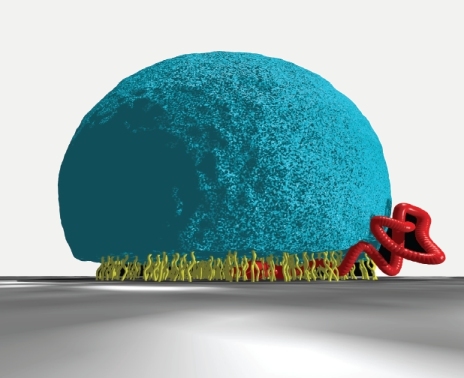A DISCUSSION MEETING
CHALLENGES AND PROSPECTS OF
SOFT MATTER AT INTERFACES
APRIL 24-26, 2013
Hotel Vier Jahreszeiten, Schluchsee, Germany
The aim of this workshop is to discuss current challenges in interface science involving soft matter materials. We propose to focus on three thematic areas dealing i) with the design of soft matter surfaces and their impact on materials properties, ii) with interfaces in biological and bio-inspired systems, and iii) with the control of wetting and lubrication properties.
The discussion will be opened by invited talks and further fuelled by invited and contributed “flash presentations”. These presentations are very short contributions: They give complementary statements on the topics exposed in the talks, raise questions or sketch new ideas. All participants are welcome to present their opinion in flash presentations. An extended poster session provides a further opportunity to continue the discussion.
Thematic Areas
Session A: Design of soft matter surfaces and impact on materials properties
What are the limits and limitations of top-down lithographic and bottom-up self-assembly processes?
Do mesoscopic instabilities represent an alternative for structuring surfaces?
What are current challenges in the design of surfaces for specific applications (e.g., photovoltaic, design of highly resistant / self-repairing surfaces)?
How can we fine-tune materials properties through the guiding influence of surfaces or substrates (e.g., by crystal growth or orientation)?
How do interfaces or surfaces impact the properties of soft matter materials (e.g., their structure and dynamics)?
Session B: Interfaces in biological materials and bioinspired interfaces
How to create highly biocompatible or highly bioinert interfaces?
Which factors or processes determine the behaviour of biopolymers near surfaces (e.g., role of water, internal structure of the biopolymer, etc.)?
How to create long-lasting non-fouling surfaces?
What controls cell adhesion on surfaces?
How can adhesion concepts used by nature be transferred to synthetic systems?
How can transformations in membranes be induced by physical and chemical stimuli?
Session C: Surfaces with controllable wetting and lubrication properties
To what extent do microscopic properties of surfaces determine their macroscopic behaviour, e.g., in nanofluidic or microfluidic applications?
How is it possible to reversibly switch wetting properties (e.g., from superhydrophobic to superhydrophilic) or make them alter with time?
How can one achieve highly water-repellent surfaces?
How to relax from “contaminated states” (e.g., trapped water on superhydrophobic surfaces)?


